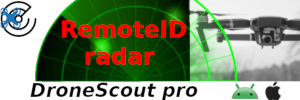- Joined
- Jul 31, 2019
- Messages
- 159
- Reactions
- 92
- Age
- 65
I haven't used my drone for a while, so I can't remember which way around this occurred, but...
I recall creating a flight path, either by flying it manually and recording points, or within the mission editor in Litchi on a browser. If I changed from Google Maps to Apple Maps, the flight path on my iPhone would not be the same. Often very significantly different, in the order of 20 meters or more difference.
I hadn't given much thought to this until recently, for work, I've encountered something that reminds me strongly of this "disagreement" between apps or maps. Without giving too much away, my company uses an app on a smartphone that will trigger certain activities if it detects the phone is within a specified GPS zone.
But these zones must be created by far away techs. A subsidiary company, to be precise. I have to send them a map (usually a screen capture of a Google satellite image of the property in question), with the zone marked, and they create the zone which is then downloaded (along with a bunch of other data) onto the smart phone. However, over and over I'm finding that the GPS zones they create are offset by about 40 meters.
The parallel to the Litchi issue is obvious, though not necessarily the same. But it seems to me that somehow a GPS region is represented in different ways on different maps, that something is being lost or misinterpreted between how they represent the zone when defining it on their PC program, to whatever is downloaded and implemented by my phone.
I've often read people pointing to a precision issue, saying 3 meters, or some say even 10 meters variation, is expected. They throw out a phrase like "Hobby-quality GPS". I can't say if that is meaningful for apps like Litchi, but it is not the issue I'm experiencing with this current app.
It is proprietary security software, so I have to be circumspect on how much I say, but I will point out that if I manually select one of the areas, the app will bring up a map (probably Google - these phones are all Android) and show me where I am, and draw a box around the defined area. I know where the area is supposed to be, and I can plainly see it is about 30 or so meters out of position on the map. But if I move towards the region as actually indicated on the map, it is quite precise when the "event" triggers on the phone. I'd say it is accurate to 1, or at most 2 meters.
To me, this smacks of a translation problem. The GPS is accurate, it is simply that something goes wrong in the translation of how the techs define the area on their PC, to what is sent to my phone to tell it where the zone is.
Just like Litchi. I felt my GPS accuracy was good to about 1 meter +/-, but if I changed maps, it was like the whole flight plan was dragged and dropped about 30 or 40 meters away. Or 10 meters -- I honestly don't remember, but I do remember is was extreme enough that I knew I couldn't trust it, even though I typically don't fly (intentionally) anywhere close to obstacles.
So, dear Internet... Does anyone have any ideas about this? Does anyone know how the GPS information might be encoded? Are there different methods of encoding this data for transmission?
Thoughts?
I recall creating a flight path, either by flying it manually and recording points, or within the mission editor in Litchi on a browser. If I changed from Google Maps to Apple Maps, the flight path on my iPhone would not be the same. Often very significantly different, in the order of 20 meters or more difference.
I hadn't given much thought to this until recently, for work, I've encountered something that reminds me strongly of this "disagreement" between apps or maps. Without giving too much away, my company uses an app on a smartphone that will trigger certain activities if it detects the phone is within a specified GPS zone.
But these zones must be created by far away techs. A subsidiary company, to be precise. I have to send them a map (usually a screen capture of a Google satellite image of the property in question), with the zone marked, and they create the zone which is then downloaded (along with a bunch of other data) onto the smart phone. However, over and over I'm finding that the GPS zones they create are offset by about 40 meters.
The parallel to the Litchi issue is obvious, though not necessarily the same. But it seems to me that somehow a GPS region is represented in different ways on different maps, that something is being lost or misinterpreted between how they represent the zone when defining it on their PC program, to whatever is downloaded and implemented by my phone.
I've often read people pointing to a precision issue, saying 3 meters, or some say even 10 meters variation, is expected. They throw out a phrase like "Hobby-quality GPS". I can't say if that is meaningful for apps like Litchi, but it is not the issue I'm experiencing with this current app.
It is proprietary security software, so I have to be circumspect on how much I say, but I will point out that if I manually select one of the areas, the app will bring up a map (probably Google - these phones are all Android) and show me where I am, and draw a box around the defined area. I know where the area is supposed to be, and I can plainly see it is about 30 or so meters out of position on the map. But if I move towards the region as actually indicated on the map, it is quite precise when the "event" triggers on the phone. I'd say it is accurate to 1, or at most 2 meters.
To me, this smacks of a translation problem. The GPS is accurate, it is simply that something goes wrong in the translation of how the techs define the area on their PC, to what is sent to my phone to tell it where the zone is.
Just like Litchi. I felt my GPS accuracy was good to about 1 meter +/-, but if I changed maps, it was like the whole flight plan was dragged and dropped about 30 or 40 meters away. Or 10 meters -- I honestly don't remember, but I do remember is was extreme enough that I knew I couldn't trust it, even though I typically don't fly (intentionally) anywhere close to obstacles.
So, dear Internet... Does anyone have any ideas about this? Does anyone know how the GPS information might be encoded? Are there different methods of encoding this data for transmission?
Thoughts?










